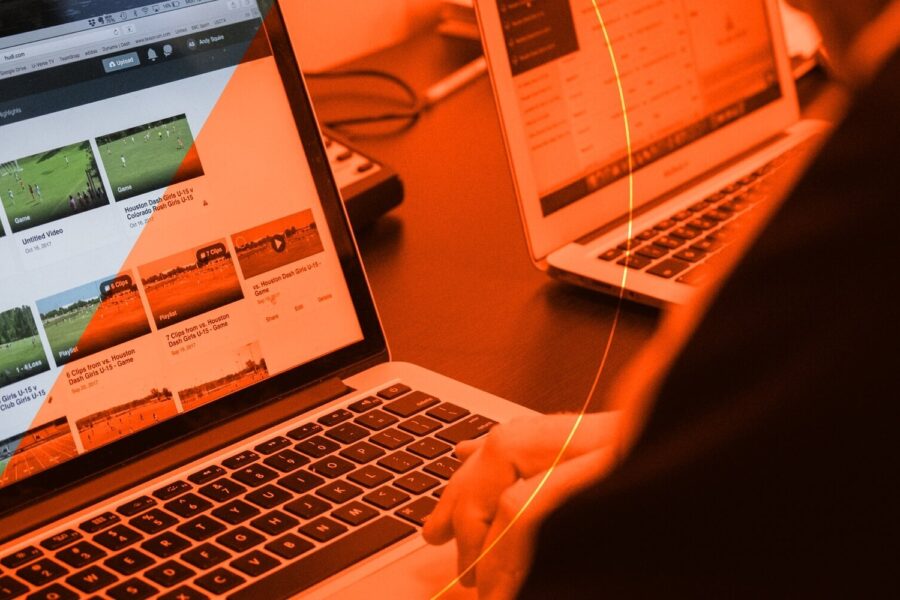Learn how technology can keep your teams connected and the major aspects of your program running — no matter your location. Here are three tips to help you adapt to and overcome today’s uncertainty.
Athletic directors and coaches across the country are leaning more heavily on remote coaching, e-learning and cloud-based communication techniques to help their programs adapt to the challenges caused by COVID-19.
Here are three ways college programs are using technology to boost their recruiting and coaching efforts to meet today’s social distancing challenges and set them up for future success.
Recruit from a Distance
Coaches aren’t able to get on the road to visit recruits and athletes can’t conduct on-campus visits, but that doesn’t mean your recruiting efforts need to come to a complete stop. Recruiters are leveraging the benefits of video and getting creative with how they engage with recruits as a way to maintain relationships and keep the evaluation process moving. Ask your recruits to film themselves doing drills they would have otherwise done in person or conduct virtual visits to get them familiar with your athletic facilities, school grounds and more.
Opportunistic athletic departments also see the casual nature of video calls as a chance to show their “human side” to recruits.
“People are more than just coaches or athletes,” said Bret Billhardt, senior associate AD for athletics operations at Wittenberg University.
“There’s a human side to everybody, and I honestly think this process has helped everyone realize that. It’s lightened everybody up and helped us all realize that behind the cloak of a coach, administrator, athletic trainer, or professor there’s also a human side. It helps recruits know if they can really play for this person. It helps them understand if this is somebody they can be around for four years of their life.”
"Like any human being, they want to be seen. They want to be heard and acknowledged."
Mike Giuliano, head women’s soccer coach at Georgia Gwinnett College
Remote Coaching
The COVID-19 situation has not only dramatically impacted the spring sports calendar but also how fall sports teams are preparing for their seasons. With all coaches unable to be with their athletes, player development, conditioning and team bonding can take a significant hit during social distancing. That’s why coaches are leaning on technology to keep their athletes connected and engaged from a distance. Coaches are sharing drills, conducting virtual workouts, hosting film review sessions via video conferencing tools and more.
“Like any human being, they want to be seen,” said Mike Giuliano, head women’s soccer coach at Georgia Gwinnett College. “They want to be heard and acknowledged. So one of the things we do is twice each week we have a ‘Player of the Day’ of the assigned. And on this particular day, the Player of the Day gets on the Marco Polo app and does a video message that answers three questions related to their favorite quote and joke and one thing they’ve always wanted to do but haven’t done.”
“Anything we can do to reconnect them with everyone is not only good for the player or individual but is also good for the team,” said Giuliano.
To learn more about how you can develop your team from a distance, check out this Remote Coaching Guide full of best practices, tips and tools.
Facility Planning
Even the best remote coaching, e-learning and cloud-based communication processes will fail if you don’t have the proper facilities or equipment. Now is the time to reevaluate your technology infrastructure to ensure your program is set up for success not only during our current situation but in the unlikely event COVID-19 restrictions extend into the fall and winter sports seasons. Work with your technology providers to identify solutions and processes that can help you overcome social distancing challenges and get the most out of your current toolset.
For example, Hudl offers an abundance of remote coaching resources including a Remote Coaching Guide and Digital Coaching Center. We can also consult with you about new solutions such as implementing smart cameras in your gyms to reduce the need for camera operators and to offer live streams for your fans.
Athletic departments are also developing contingency plans in the event their facilities need to be used for academic purposes.
“What we are preparing for as an admin and what we are preparing our coaches for is the realization that at school of our size our athletic facilities are the biggest facilities on campus,” said Billhardt.
“We’re anticipating our facilities are going to be utilized way more for academics this upcoming year because of social distancing, but, if that means we can be on campus and reengage in all activities that are part of being a college student, I don’t think it’s going to have that much of an impact on us as an athletic department. We’ll figure it out because that’s kind of what we do.”
There’s a ton of uncertainty about the COVID-19 situation, but what you can control is how you respond to the challenges that come your way.
To learn more about how you can ensure you are set up for success now and in the future, visit our hub of remote coaching resources.






























